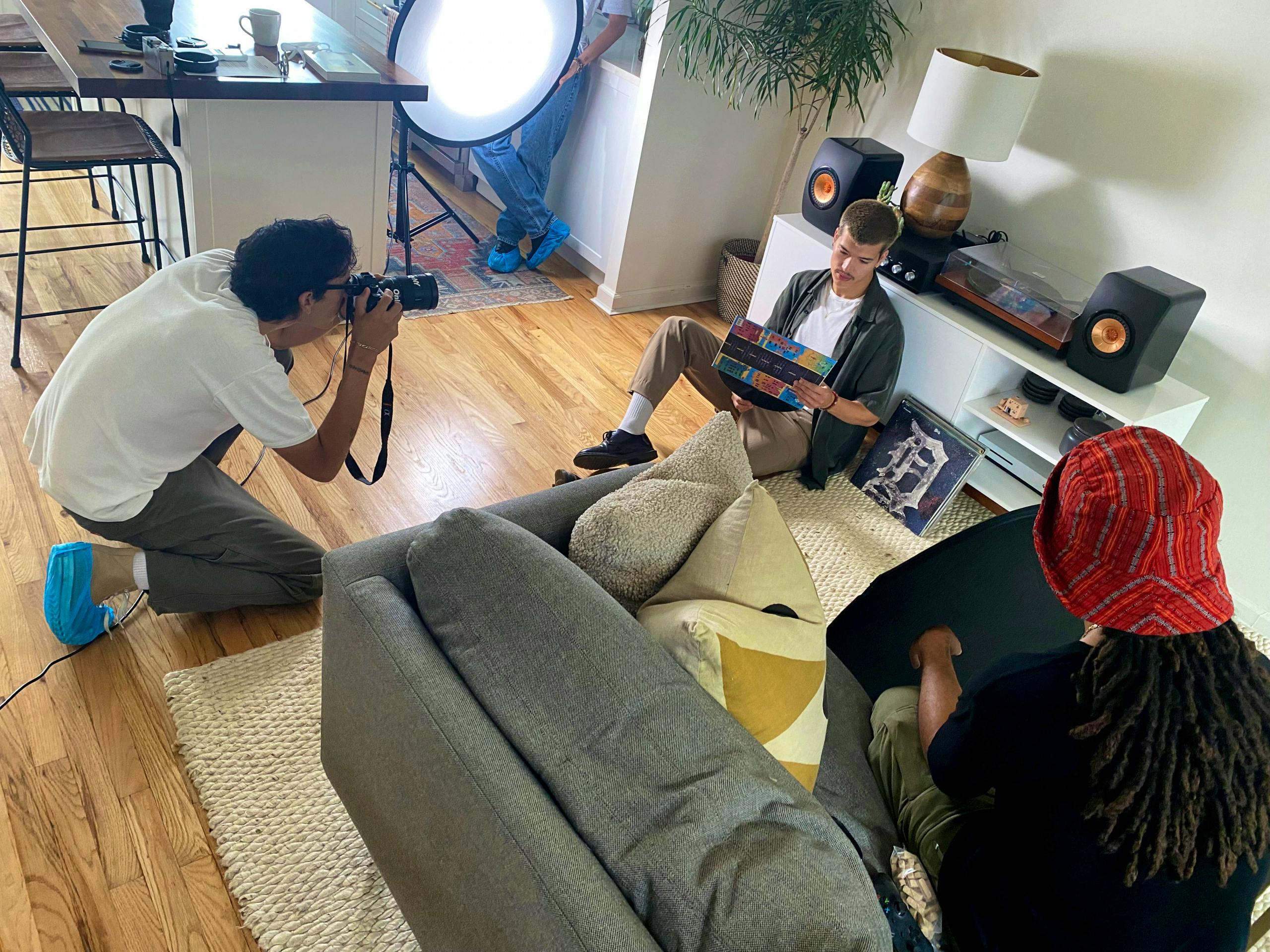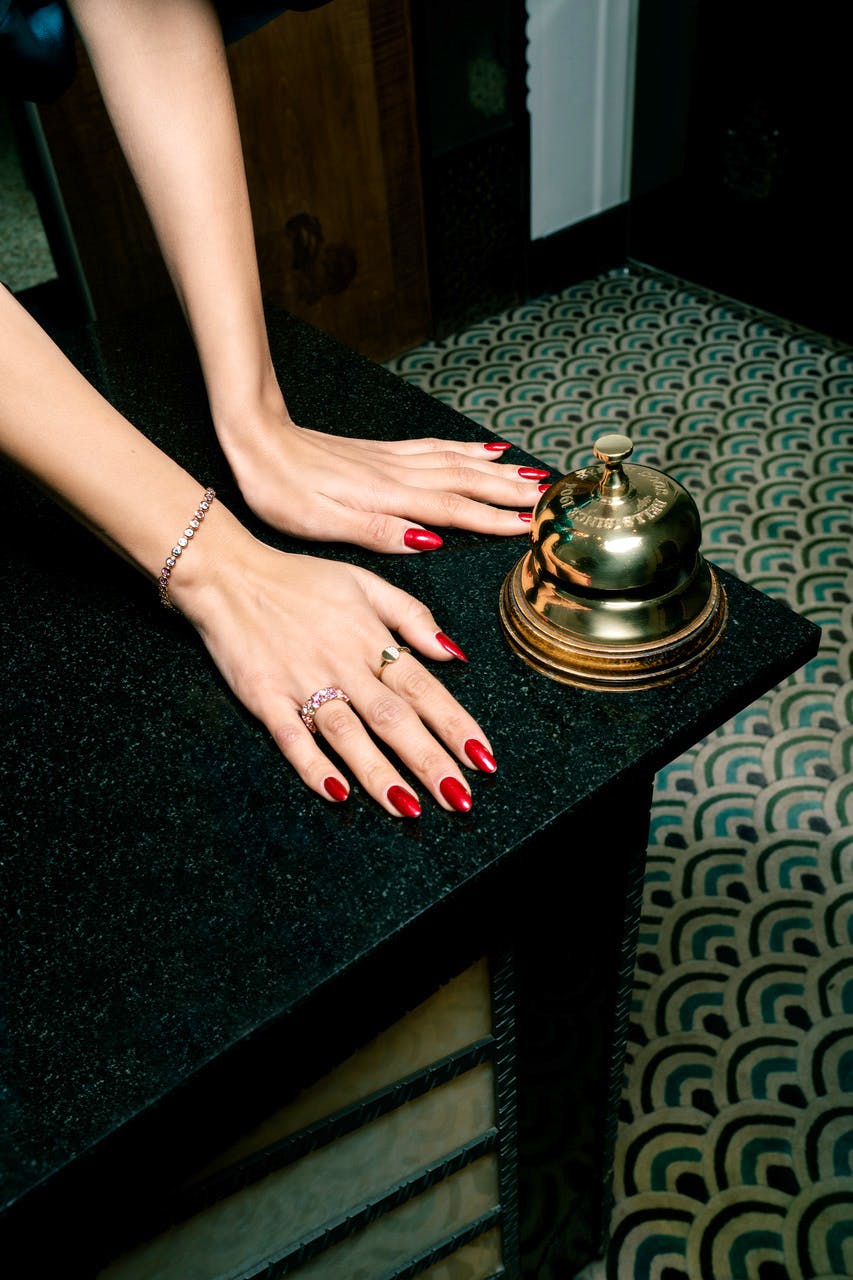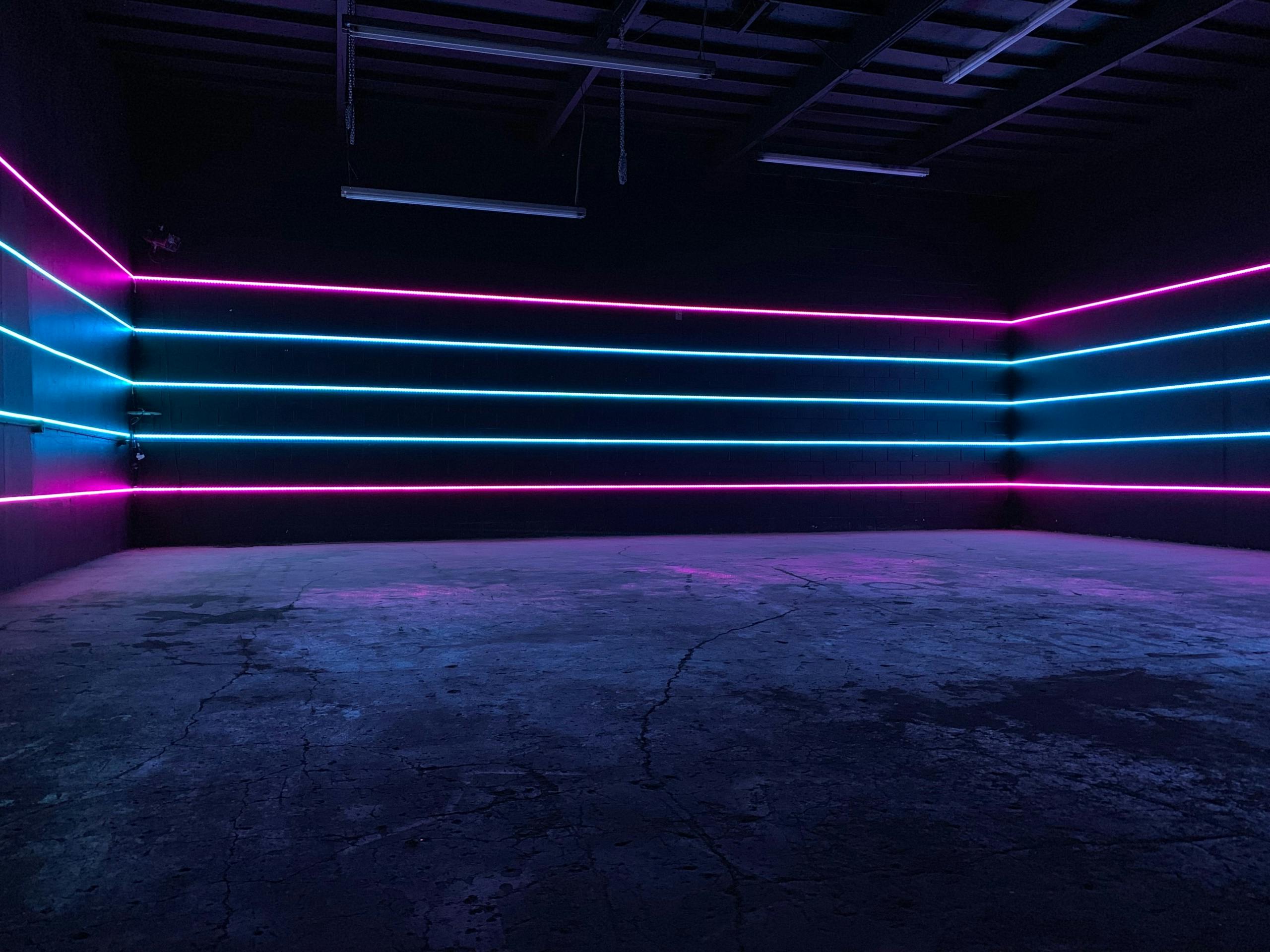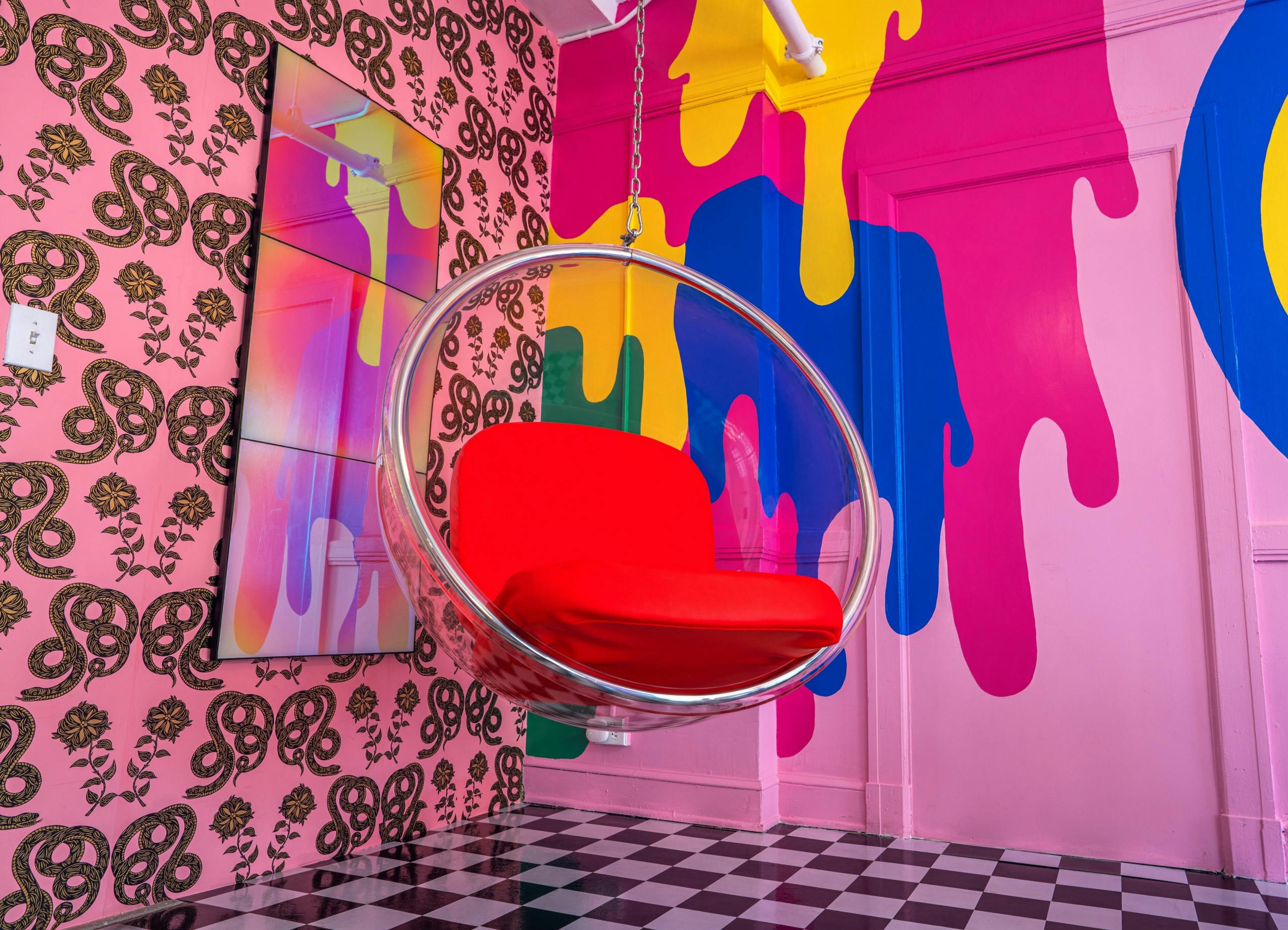Get essentially the most from any shoot location
It takes planning, vision, and research to source the perfect shoot location, but that’s only half the battle. Once you’re in there, the clock is ticking, and you must be creative and resourceful to get all the shots you need in the time available.
“Finding the right location for a shoot is an art in itself,” begins Jonny Bateman, creative director at Vault49. “No location is ever going to be 100% perfect, so you need a bit of imagination to be able to see its potential.” Alongside personal recommendations from the wider team and previous collaborators, Vault49 also makes use of resources such as online location-sourcing marketplace Peerspace.
Bateman recalls a campaign photoshoot for 7UP, which was entirely planned and executed during the UK’s second nationwide lockdown in October 2020. “We had to allow for three different set-ups and scenarios all within one property, but make it look as if they were shot in different places around the world,” he explains. “Finding a space with that level of flexibility added to the challenge, but with the right location and enough creative vision, you can make Berkshire look like Brazil.”
Vault49 shoot for 7UP
FIND ON-BRAND DETAILS
Although versatility is important, Bateman contests that searching for a totally blank canvas for a location shoot is missing the point. “It can feel slightly soulless; you may as well be shooting in a studio,” he points out.
“My ideal way of working is to find a location that already has a bit of personality to it. I often find inspiration for how a space can work through the things that already exist in it and how it feels to be physically present there, as well as visualising how I can adapt it through propping and styling to align with the personality of the brand I am working with.”
“I go off decor, vibe and colours, and how they match either the fashion or product we are shooting,” says Andy Hoang, an editorial and commercial photographer represented by Studio PI. “I prefer a location with a distinctive personality that you don’t have to add much to,” he continues. “I’m more about shooting the environment, unless it’s a studio-based shoot where we’d recruit a set designer to add props and backdrops.”
Hoang gives the example of a recent shoot for a sunglasses brand: “One of the requirements was to have a retro 80s bathroom. You can’t hire that in,” he smiles. “In situations like that, a location house that ticks the box is always more ideal – and cheaper – than creating a whole set-build to fulfil the required criteria.”
 Keithcity Group shoot by Andres Castillo
Keithcity Group shoot by Andres Castillo
MIX THINGS UP
If a location is already decorated in a distinctive way, chances are you will have chosen it because it fits the brief at hand. But that doesn’t mean bringing additional props and rearranging furniture is off the cards.
“Each shoot is completely different,” explains Bateman. “Generally, there will be some space reconfiguration required: sometimes for the visual aesthetic, other times from a practical perspective. Remove any subjectivity from your personal taste in interior design and approach the art direction through the lens of the campaign you are working on.”
“Hosts understand the multitude of ways their space will be used, so most understand that furniture or props may need to be moved,” adds Liz Yam, design principal at New York-based agency Keithcity Group, who regularly books spaces using Peerspace. “Once, we were in a home with a type of flooring that would scuff if tape was applied to it,” she continues. “So, we took lots of ‘before’ photos to reference where to put things back.”
“We just ask guests to move furniture back to how they found it,” says Karen Rosalie, founder of Rosalie Agency, who has three different shoot spaces available to hire on Peerspace. “More often than not, you’re booking a location for what the space offers – so moving things around should be minimal.”
“I prefer minimal rearranging,” agrees Hoang. “I may hire in small bits of furniture to add depth, but nothing over the top. I’d normally go with the flow of how the set is already laid out, as that’s the main reason for hiring the space,” he points out. “For me, the only changes would usually be to remove small intruding items that distract from the main focus.”
 Andy Hoang for Bucherer
Andy Hoang for Bucherer
EXPLORE EVERY ANGLE
“People are surprised how much they can get from one location, however small it may be,” continues Hoang. “In one small room, you could shoot wide-angle to change perspective, add props to give it another element, or even add creative light setups to change the mood of the scene. If, in a bare white studio, you can shoot a whole editorial by the same rules, you can definitely achieve more on a location which already has character.”
Thorough pre-production is always vital for any shoot to run smoothly. “Locking in the shot-list and defining a clear approach to art direction is key,” advises Bateman. “Doing a test shoot to explore all of the compositions within the approved shot list is also essential.”
Sometimes things don’t go entirely to plan, of course: Bateman gives a real-life example of a week-long shoot where a tree had come into full bloom since the initial location scouting, and it was blocking the natural light coming into the space.
In cases like this, thinking on your feet can help make the most of the time you have, rather than spending it firefighting. “I try to allow room for a bit of spontaneity and ‘happy mistakes’ – those extra shots that you didn’t plan for, but are inspired to create on location,” adds Bateman. “These can be the most exciting ones to shoot, and quite often end up making the final cut.”
 Andy Hoang for Larizia
Andy Hoang for Larizia
TICK MULTIPLE BOXES
Capturing multiple pieces of content during one shoot helps maximise efficiency of both time and budget. “We ask talent to bring a change of clothes, and then we utilise another room,” explains Yam. “If you need to do the same, I recommend booking locations with multiple rooms.”
Hoang recalls a shoot featuring luxury handbags and shoes that required a mixture of exterior shots on London streets and interior shots with a model. For the latter, he secured the use of the Presidential Suite at a boutique Kensington hotel. “We used it for our lifestyle shots, but also as a base for changes and our central point to a few outdoor location spots nearby,” he explains. “Having a base of operations makes life so much easier.”
“Being able to see as much of a location as possible before actually visiting it – such as different angles and ways it’s been styled and used previously – can help you envisage how the space could work for your brief,” advises Bateman.
“Finding the right location is just part of the challenge,” he concludes. “How you bring the client along on the journey with you is another. Think about how to express your creative vision for the space through visual references, like mood boards for props and styling, so they get a clear understanding of how the final space will look and feel. Get them excited about it. And make sure you allow enough time for alignment and approval.”

Top and gallery: Peerspace locations


Get 15% off your next location booking at peerspace.com
